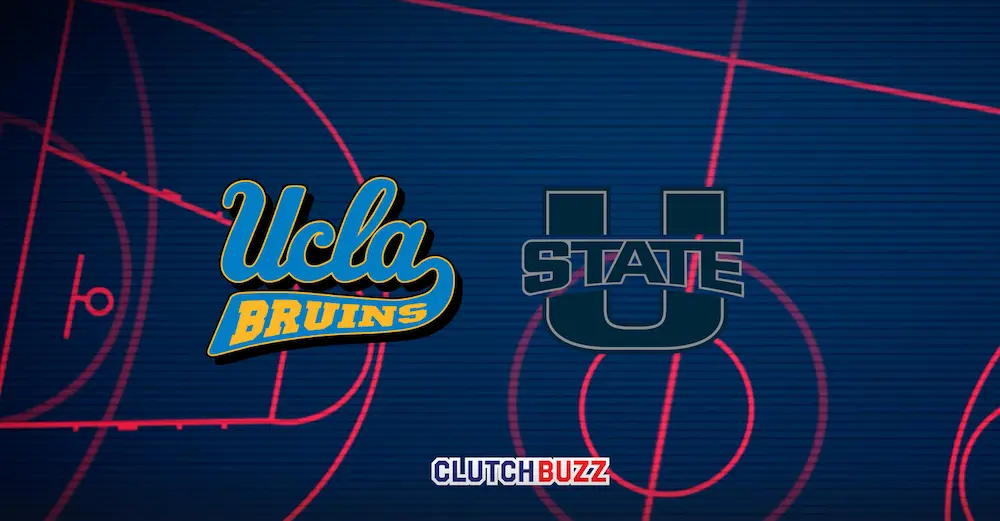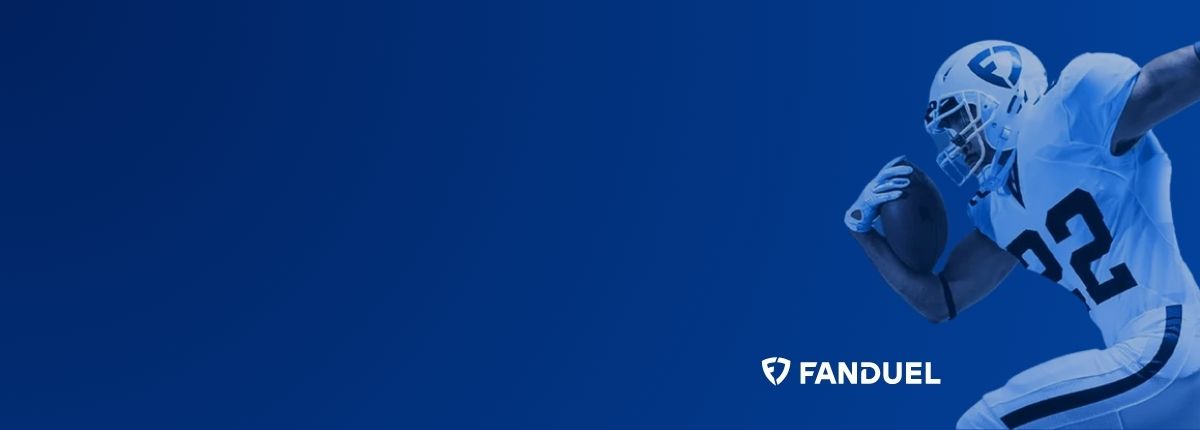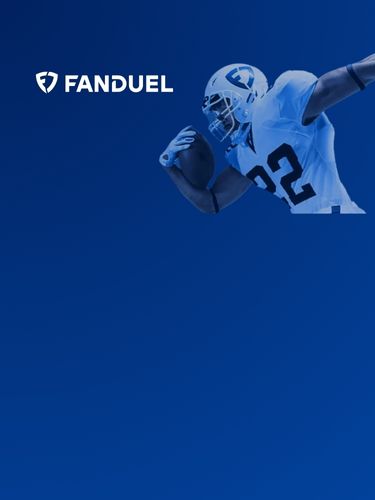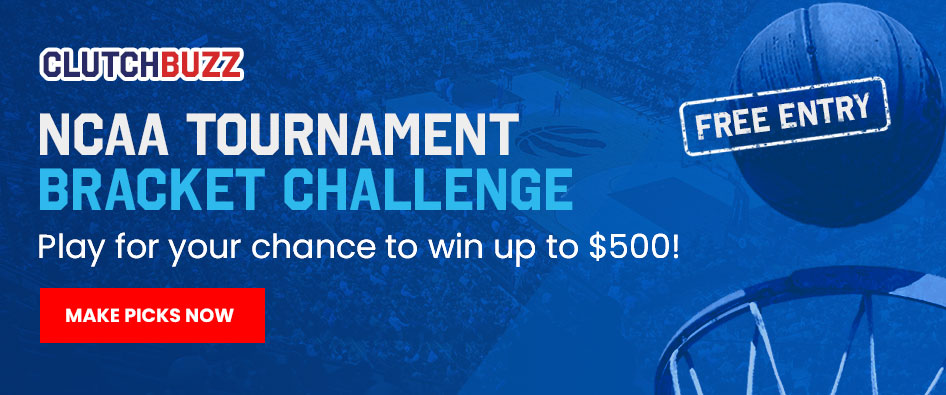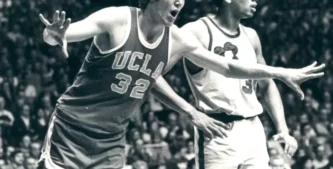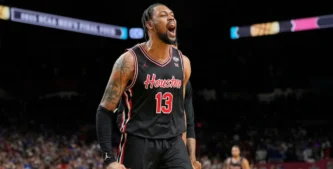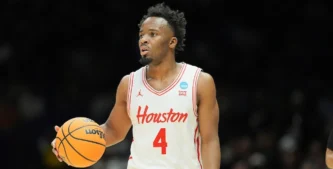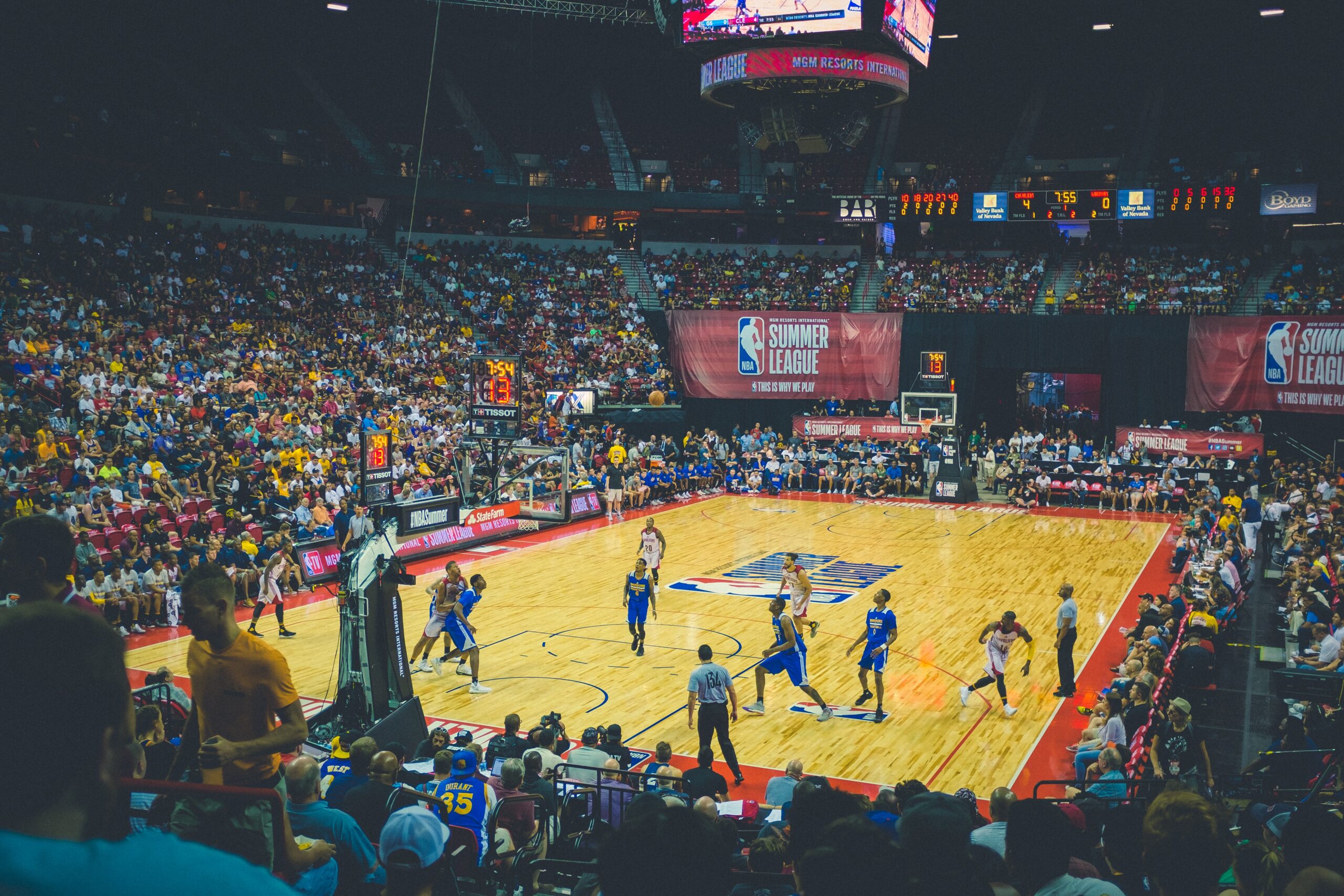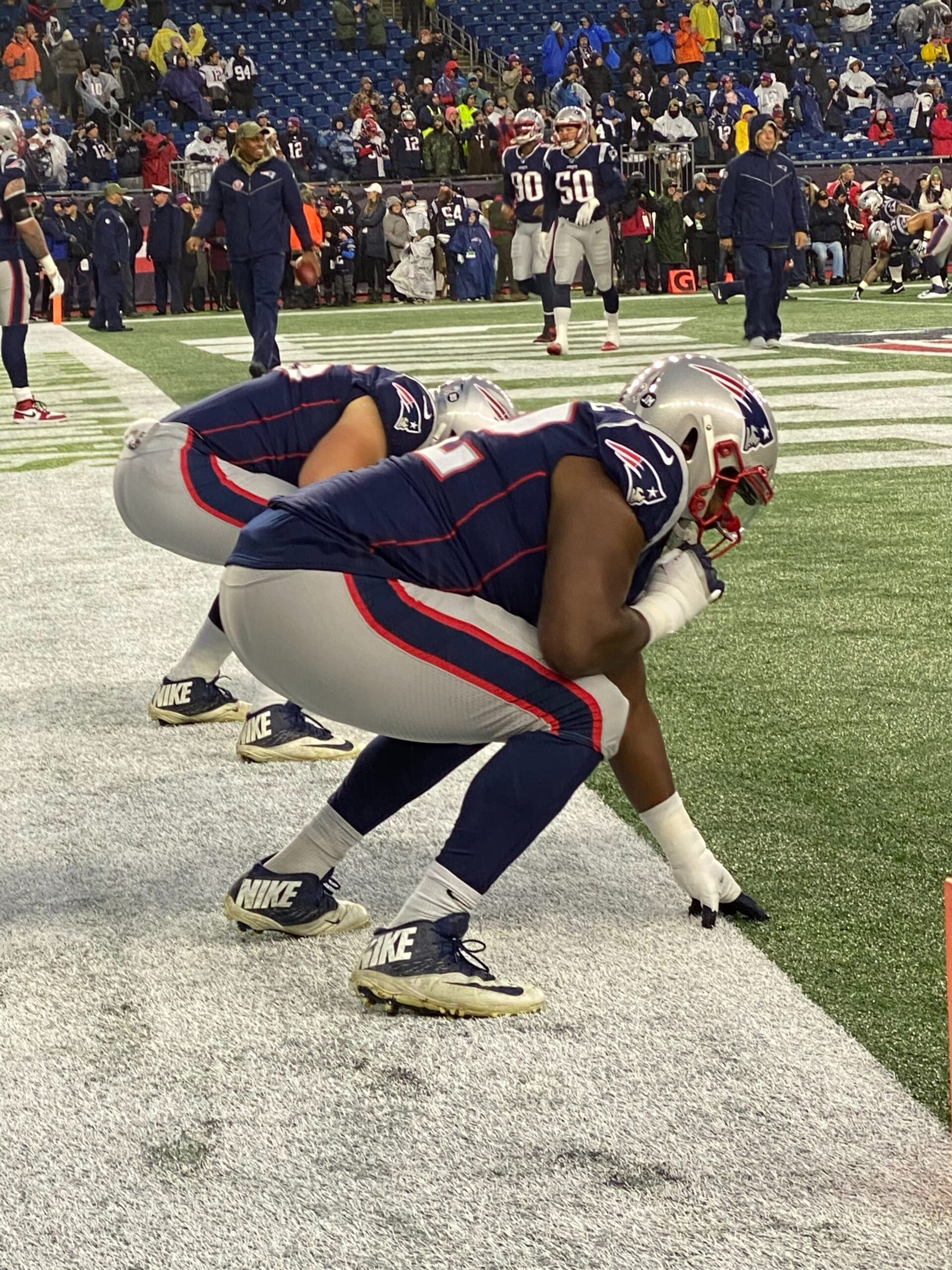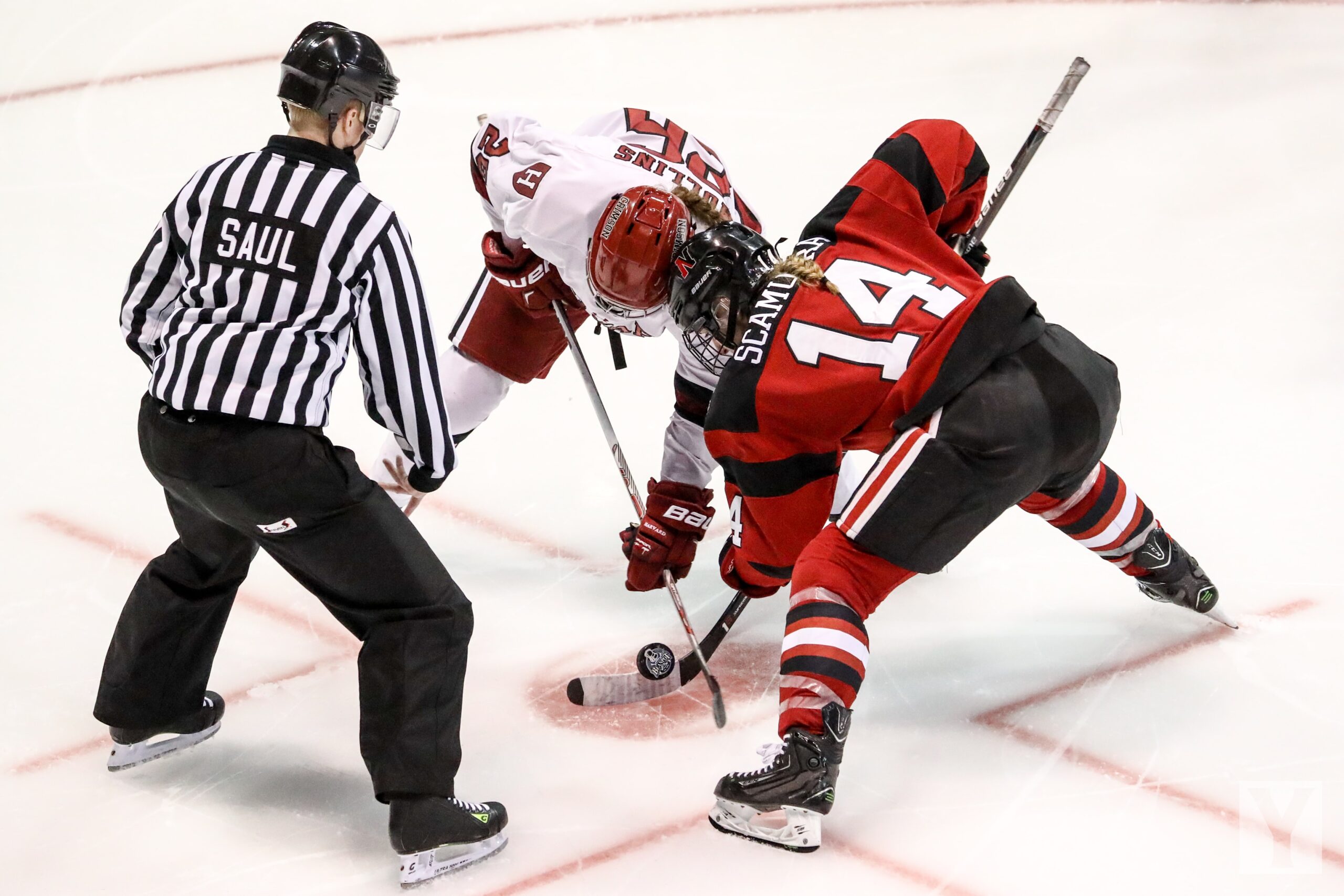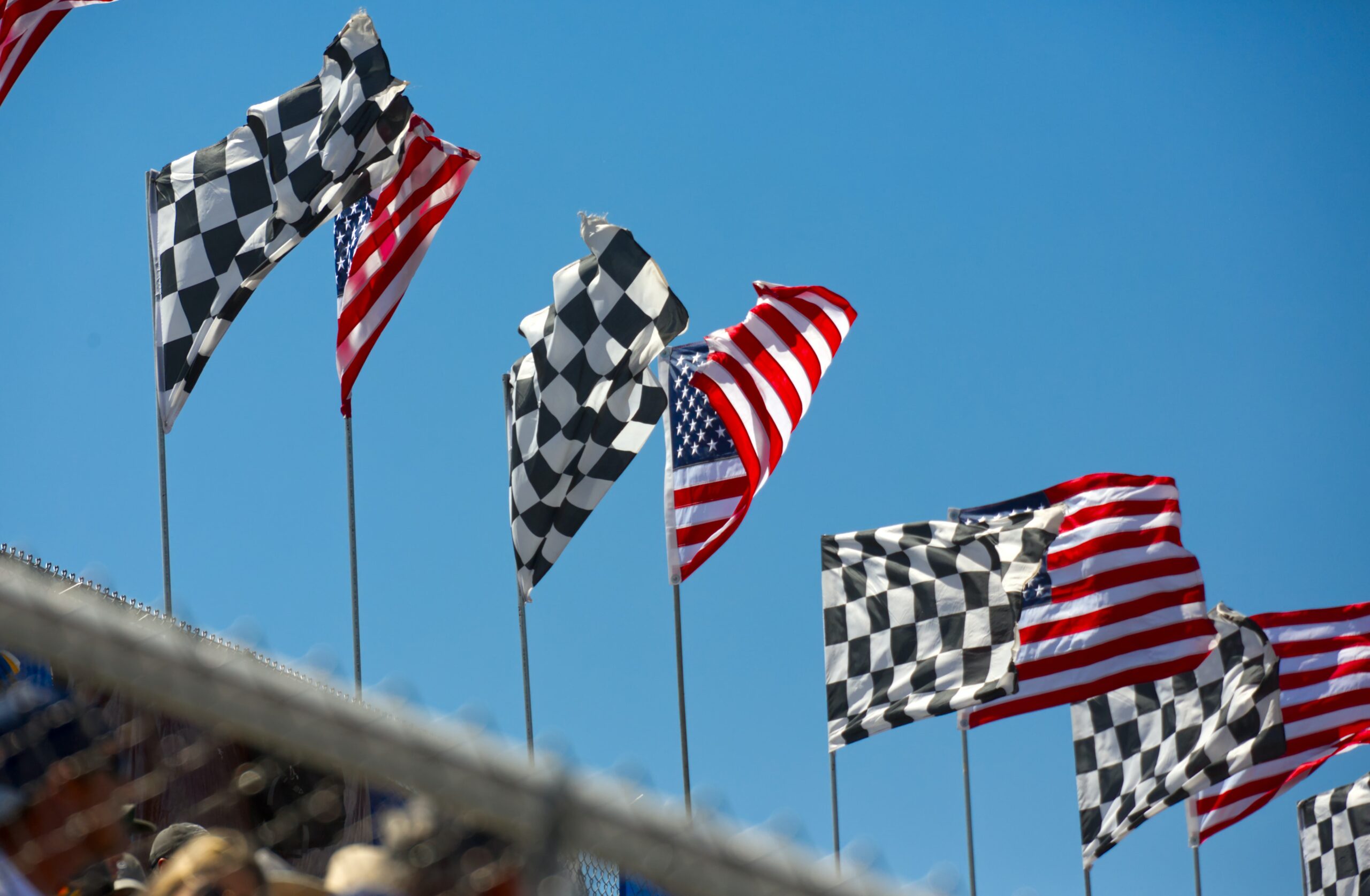Are you excited for the March Madness game between UCLA vs. Utah State? The first-round matchup between the No. 2 seed UCLA Bruins and the No. 15 seed Utah State Aggies in March Madness is set to deliver an exciting showdown. UCLA enters as one of the top contenders, but don’t count out the scrappy Aggies!
With talent on both sides, this game promises plenty of drama. Let’s break down the teams, highlight key players, and explore the best betting opportunities for this thrilling NCAA Tournament contest!
Check out some of the best March Madness betting promos here.
UCLA vs. Utah State Betting Odds and Lines
According to the consensus odds, UCLA is favored by about 5.5 points in this matchup. The moneyline is roughly UCLA -220 / Utah State +180 (implied ~65% win probability for UCLA). The over/under for total points is set around 144 to 144.5 points, indicating expectations of a moderately high-scoring game.
Point Spread (UCLA -5.5)
Bettors see UCLA as the stronger team by a few possessions. The Bruins were 18-12-2 against the spread (ATS) this season, often covering thanks to their solid finish. Utah State went 16-16 ATS and did cover in 2 of its last 3 games entering the tourney.
A 5.5-point spread suggests the market respects Utah State’s firepower – this is not the typical 2-vs-15 blowout scenario (in fact, it’s a #7 vs #10 matchup in reality). Analysts are split: Some project UCLA to cover the number with its superior defense and size. For instance, SportsLine’s model pick (via CBS) was reportedly hitting one side of the spread in over 60% of simulations (though the exact pick is proprietary). . That expert cited UCLA’s matchup advantages (shooting bigs vs. zone, Cronin’s track record) and predicted Utah State would need an unusually hot shooting night from Martinez and Falslev to keep it within the number.
On the other hand, some analysts believe Utah State +5.5 has value. Covers.com leaned toward the Aggies, noting “Utah State’s offense is the best unit in this game” and that their barrage of threes could make it close late.
Indeed, if the Aggies hit their outside shots (they attempt over 43% of their shots from three since Feb. 1), they can put real pressure on UCLA. The neutral-site setting in Lexington could favor the underdog as well – any lingering neutral fans often root for upsets
In summary, UCLA -5.5 is favored for good reason, but Utah State’s scoring ability makes this spread a tight one. Consensus lean: UCLA to win by around 5–8 points, meaning a cover is very attainable but not guaranteed.
Moneyline (UCLA ~-220 / USU +180)
UCLA’s moneyline implies about a 65-70% chance to win. If you like UCLA, the spread is probably the better play given their tendency to win by margin when they do win (and limited payout on -220). Utah State’s +180 ML is intriguing for upset seekers – the Aggies are no stranger to upsets (4 wins as underdogs this year) and the Mountain West sent a team to the Final Four just last year.
However, the MWC also has a reputation for early exits, and this year some MWC teams have already stumbled (San Diego State “laid an egg” in the First Four).
If you believe in Utah State’s offense and UCLA’s potentially shaky interior defense, a sprinkle on the Aggies upset could be justified. Still, the expected outcome is a UCLA victory – historically, 7-seeds beat 10-seeds about 60% of the time, and UCLA is a power conference team with plenty of talent. Cronin’s Bruins “should win” – the key question is by how much. Find how to bet on March Madness here.
Over/Under (144.5)
This total has drawn interest because it pits a high-scoring offense against a solid defense. The over 144 looks tempting considering Utah State’s last 10 games averaged 154.4 total points (80.5 for, 73.9 against). UCLA’s games have averaged around 140.5 in the last 10 (72.0 for, 68.5 against).
The stylistic matchup actually encourages points – “On both ends of the court, the offense’s preference is encouraged by the defense. That sounds like an Over.”
Translation: Utah State wants to shoot a lot of threes, and UCLA’s defense has been mediocre at defending the arc (allowing 35% 3PT).
Meanwhile, UCLA will attack the soft spots in USU’s zone – the Aggies give up easy looks inside (53% 2PT allowed) and second chances (31% offensive rebound rate allowed), which should lead to efficient scoring for the Bruins. One analyst’s best bet was the Over 144, reasoning that both teams will exploit each other’s defensive weaknesses (UCLA scoring inside; Utah State hitting outside shots).
Betting Strategy For UCLA vs. Utah State
Barring an outlier poor shooting night, a score in the mid-70s for each team is plausible. As always, late-game fouling could push the total over if the game is within single digits.
Lean: Over, due to Utah State’s pace and offensive prowess, combined with Utah State’s defensive issues. But if UCLA successfully drags the pace down and controls the tempo, the under could hit – UCLA might try to grind longer possessions to avoid a track meet. It’s a true clash of styles in that regard, yet “styles make fights,” and here each team’s style can light up the scoreboard. Click here to find out the best March Madness strategies.
UCLA Bruins (22–10, 13–7 Big Ten)
The Bruins finished 22-10 overall and tied for fourth in their first Big Ten season. They won 11 of their last 14 regular-season games, including quality wins over ranked teams like Wisconsin, Oregon and Michigan State. UCLA’s regular season ended with an 86-70 loss to Wisconsin in the Big Ten Tournament semifinals. Over the last 10 games, UCLA went 6–4, averaging 72.0 points while allowing 68.5. Defense has been a strong suit – UCLA led the Big Ten in scoring defense (65.7 ppg allowed) – but the offense picked up late in the year, improving by +1.8 points per 100 possessions since Feb. 1.
Utah State Aggies (26–7, 15–5 MWC)
The Aggies posted a 26-7 record and finished third in the Mountain West. They were one of the nation’s hottest mid-majors early on, starting 10–0 and even beating Iowa 77-69 in November. Utah State went 6–4 in its last 10, averaging a prolific 80.5 points on 49.2% shooting.
However, they stumbled late with a few losses in conference play (e.g. dropped games to Boise State and Colorado State) and fell 83-72 to Colorado State in the MWC semifinals. Still, the Aggies enter the tournament battle-tested – they have gone 4–4 outright as underdogs this season, showing they can punch above their weight. Notably, Utah State is making its sixth NCAA appearance in seven years and is “hunting for consecutive years with an NCAA Tournament win” after an opening-round victory last March.
Click here to take advantage of DraftKings special betting promo.
UCLA Bruins Key Players
Junior F Tyler Bilodeau (6’8″) – UCLA’s leading scorer at ~13 points per game. Bilodeau is a versatile stretch-forward shooting over 40% from three. He was a first-team All-District pick and is considered the Bruins’ best player. In UCLA’s balanced offense, Bilodeau’s ability to score inside and out is critical; for example, he put up 14 points in the Big Ten quarterfinal vs. Wisconsin is a focal point for opposing defenses.
Junior G/F Eric Dailey Jr. – Second-leading scorer (around 11–12 ppg). Dailey, a 6’7″ wing, also hits 40% from deep on high volume, forming a potent one-two punch with Bilodeau
His size and shooting make UCLA’s offense hard to guard – Dailey and Bilodeau “should cook the Aggies’ terrible zone” with their perimeter accuracy.
Senior G Kobe Johnson – A do-it-all guard (8.2 pts, team-high 5.9 rebs, 1.7 stls) known for defense. At 6’6″, Johnson often guards the opponent’s best player and helped UCLA force turnovers on 22% of possessions. He was an All-Big Ten defender and also chips in offensively (career-high 8.1 ppg).
Sophomore PG Dylan Andrews – Starting point guard (3.3 assists, 7.1 pts) who runs the offense. Andrews is the primary facilitator (3.3 APG) and spearheads UCLA’s perimeter defense with his on-ball pressure. He’s backed by Skyy Clark (8.0 pts, 2.8 ast), giving UCLA a solid ball-handling tandem.
C Aday Mara – A 7’3″ freshman center and elite rim protector (1.5 blocks). Mara’s minutes have increased down the stretch, and he averages 6.3 points and 3.9 rebounds in just 12.6 minutes. His impact is larger than the stats – he anchors the paint on defense and grabs offensive boards (UCLA collects 32% of its misses). If Utah State’s smaller lineup struggles with his height, Mara could be an X-factor.
Utah State Aggies Key Players
Sophomore G Mason Falslev (6’3″) – The Aggies’ do-it-all guard and arguably their MVP. Falslev led the team in rebounding (6.2 rpg) and steals (2.3 spg) while scoring ~15 points and dishing ~3.7 assists per game. Down the stretch he was on fire, averaging nearly 18 PPG and 5 APG in the last month. A versatile playmaker, Falslev pushes the pace in transition and shoots 50% from the field (40% from three). His ability to penetrate zone defenses and hit timely threes will be key for USU’s upset bid.
Senior G Ian Martinez – Utah State’s leading scorer at 16.8 points per game. Martinez (6’3″) is a dynamic scorer who can create his own shot. He shoots 44.6% overall and 37.9% from three in recent games. Martinez is capable of exploding for 20+ points on any night. If he and Falslev “erupt” from downtown, Utah State’s offense becomes extremely hard to stop.
Senior G Drake Allen – The point guard and facilitator, averaging 3.9 assists (best in MWC) with a 7.2 scoring average. Allen is the engine of USU’s ball movement – the Aggies lead their conference with 17.4 assists per game. He’s a solid defender up top as well. Taking care of the ball is a strength (USU’s turnover rate is low), thanks in part to Allen’s steady play.
Senior G Dexter Akanno – A veteran combo guard chipping in ~8–11 points nightly. (He averaged 8.3 ppg on the season, but was scoring in double figures late in the year). At 6’5″, Akanno is the tallest of USU’s starting guards and shoots ~39% from three. He provides additional scoring punch and size on the wing.
C Aubin Gateretse – A 6’11” center and the lone true big in the Aggies’ lineup. Gateretse isn’t a focal point offensively (6.5 ppg), but he will have a crucial role trying to protect the rim and rebound. USU often plays small-ball with four guards around Gateretse, so his ability to defend UCLA’s forwards (and stay out of foul trouble) is pivotal. Utah State struggles on the glass when he’s off the floor – no other Aggie taller than 6’5″ plays major minutes.
Historical Context and Tournament Insights
This matchup features a blue-blood program vs. a mid-major power. UCLA is making its 53rd NCAA Tournament appearance – they have an all-time tourney record of 115–45 with a record 11 national championships. The Bruins thrive in March; under Cronin they made deep runs in recent years (Final Four in 2021, Sweet 16 in 2022 and 2023). Last season was a rare miss, but UCLA “bounced back from a disappointing 16-17 season” and is eager to make noise again.
In contrast, Utah State’s program doesn’t have the hardware but is remarkably consistent lately. The Aggies have now reached March Madness in three straight seasons – each with a different head coach – and six of the last seven tournaments (including 2020’s canceled event).
Historically, however, Utah State has struggled to advance. Prior to last year, USU had not won an NCAA Tournament game since 2001. They broke that streak in 2024 (hence the bid for consecutive tournament wins for the first time). This underdog mindset makes them dangerous and hungry.
Head-To-Head History
In terms of head-to-head history, these programs rarely meet, but there is some trivia: UCLA and Utah State faced off in the NCAA Tournament decades ago, with UCLA winning in the 1962 Regional Semifinal and 1970 Regional Final. (Those UCLA teams were led by legendary coach John Wooden – indeed, 10 of UCLA’s 11 titles came in the ’60s/’70s under Wooden.)
While those historical games have little bearing on today, it underlines the disparity in tradition – as Utah State’s coach Calhoun said, UCLA is “probably the most storied program in the history of college basketball”.
Playing UCLA on the big stage is a big deal for Utah State, but they won’t be intimidated. In fact, common opponents this season show how close this could be: Both teams beat Iowa (USU 77-69 in Nov, UCLA 94-70 in Jan) and both lost to New Mexico (UNM beat USU twice and also upset UCLA 74-62).
So, each side knows the other is capable. Cronin has scouted Utah State extensively (he caught their Iowa game film and knows Coach Calhoun personally). Expect a well-prepared battle on both ends.
The Mountain West Conference had a notorious streak of early exits until last year’s San Diego State run. Utah State will aim to emulate SDSU’s success. Meanwhile, UCLA (now representing the Big Ten) wants to avoid being a tournament disappointment for a second straight year. The winner of this game would advance to face the 2-vs-15 matchup winner in the Midwest Region’s next round, so a path to the Sweet 16 is conceivable for either.
Head-to-Head Stats
| Statistic | UCLA Bruins | Utah State Aggies |
| Points per Game (PPG) | 74.8 | 80.9 |
| Opponent Points per Game (OPPG) | 65.7 | 70.0 |
| Field Goal Percentage (FG%) | 46.6% | 49.0% |
| Rebounds per Game (RPG) | 32.7 | 34.6 |
| Turnovers per Game (TOPG) | 10.6 | 10.7 |
| KenPom Adj. Offensive Efficiency
(points per 100 possessions, rank) |
116.9 (36th) | 120.6 (17th) |
| KenPom Adj. Defensive Efficiency
(points allowed per 100 poss., rank) |
95.1 (17th) | 105.7 (150th) |
Predictions and Best Bets
This game has the makings of a competitive, high-energy first-round showdown. UCLA is rightly favored – their combination of tournament experience, superior defense, and size across the lineup should eventually tilt the outcome in the Bruins’ favor. Most analysts predict UCLA will advance in a close-but-clear win, something like a 5 to 10-point margin. For example, 247Sports’ predictive bracket had UCLA winning 78-71, and ClutchBuzz experts side with UCLA to cover the spread. The consensus is that UCLA’s balanced attack and ability to exploit Utah State’s defensive lapses will carry the day.
That said, don’t count out the Aggies – their offense can catch fire, and if they hit, say, 12+ three-pointers, they absolutely could push UCLA to the wire or even pull the upset. A few bold predictions have Utah State winning outright; one analyst flatly stated “UCLA should win, but Utah State will” in his upset pick. It’s a viable upset pick in brackets due to Utah State’s offensive ceiling.
ClutchBuzz Call
UCLA’s defense and poise win out, but it won’t be easy. Something like UCLA 77 – Utah State 71 feels plausible, which would mean UCLA covers -5.5 by a whisker and the total goes just over. The Bruins’ edge in rebounding and turnovers forced will generate a few extra possessions that make the difference late.
Expect Mason Falslev and Ian Martinez to have their moments (the Aggies might even lead in the first half if they come out hot), but UCLA’s depth and adjustments should counter them. In crunch time, look for UCLA to get key stops and hit free-throws (despite their season FT woes, they’ll aim to improve under pressure).
Best Bets
For betting, the Over 144 is an attractive play given the offensive profiles – each team’s “greatest strength can attack the opponent’s weakness,” which usually spells points.
Both squads average a combined score above the mid-140s on the season, and neither defense is likely to completely shut down the other. An 83-75 type of game would sail over. Just be aware that if UCLA dictates a slower half-court game, it could land under – but the lean is over, as one Covers analyst took over 143.5 as his best bet.
Against the spread, UCLA -5.5 is a reasonable pick. Several experts have endorsed the Bruins at anything up to -6.5, believing UCLA’s advantages (size, offensive rebounding, and the coaching of Mick Cronin) will enable them to win by multiple possessions.
If you prefer to back the underdog, Utah State +5.5 isn’t a bad gamble – they can score with anyone, and if their three-point shots fall, this could be a one-possession game either way. But the more confident play is UCLA to cover, as Utah State’s defensive shortcomings make it hard to trust them to keep it within two buckets.
For a player-centric angle, watch Tyler Bilodeau’s points – he’s a matchup problem for USU, so a player prop over (if available around say 14.5 points) could be worthwhile given Utah State’s trouble guarding stretch forwards. On Utah State’s side, Mason Falslev over assists might be a sneaky play since UCLA’s pressure could force him to distribute (and he’s hit 5+ assists often lately).
Find the best DraftKings betting promo for March Madness games here.
The Pick
UCLA to win (moneyline), lean UCLA -5.5 against the spread, and Over 144 points as the best bet on the total. This matchup should be fun – a high-powered mid-major offense against a storied program with athletes – and it could be closer than your typical 2-vs-15 (or in this case 7-vs-10) game.
Don’t be shocked if it’s decided in the final minutes. Ultimately, expect the Bruins’ tournament pedigree and defense to stave off the Aggies’ upset bid, setting UCLA up for a potential deep March run
